From Villain to Unsung Hero-by CAPT G.A Fernando
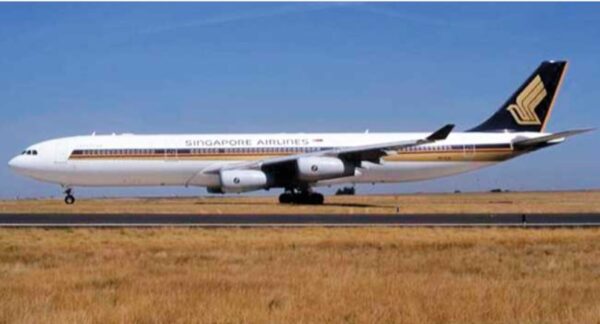
Source:Island
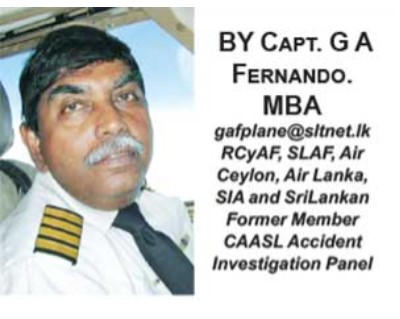
One winter morning in 1998, as a part of the SIA crew while planning a departure from Kimpo (Gimpo) International Airport Seoul South Korea, in our Airbus A 340 aircraft, we realised that it had snowed all night and the runway surface was ‘contaminated’ with melting snow (Slush). We had been told time and time again by the performance experts that a depth of snow, slush or standing water more than 3mm (1/8th of an inch), the proverbial SriLankan Baas’s ‘Noola’, on more than 25% of the Runway, it is considered to be contaminated. The Kimpo Airport Authorities hadn’t cleaned the runway surface like in most other airports.
A contaminated runway poses a whole host of problems for pilots attempting to take-off. Because of the natural resistance of the water, snow or both on the runway in varying degrees and depths, the acceleration to the take-off speed becomes slow as the wheels have to displace the contaminants using up a greater amount of runway length than on an uncontaminated (dry) runway. This leaves less runway length available for the aircraft to stop, if for some unforeseen reason the pilots need to abandon the take-off. Then stopping becomes a problem as the tyres may skid or aquaplane, making the wheel brakes ineffective with a good chance of over running the runway length available.
In this day and age, to reduce the thermal and mechanical stresses to the jet aircraft engines it was recommended by the manufacturer that pilots use a reduced thrust setting on uncontaminated (dry) runways, for take-off. Therefore, it was mandated that on a contaminated runway, full thrust is used to enable the aircraft to accelerate quicker to the speed (V1) at which the Captain will have to decide whether he will stop or go. Every type of aircraft is tested in snow, slush or standing water, the spray patterns studied and a set of lower V1 speeds for slush operations are available for different take-off weights in graphs or in tabulated form for quick reference. At V1 speed, if the Captain decides to continue the take-off it becomes a ‘non-event’. However, if he decides to stop for any reason, it becomes regimented and exiting as he has got to announce to the First Officer that he is discontinuing the take-off, apply brakes, close the engine Throttles, keep the aircraft straight on the centre line (that may not be visible), deploy spoilers and Reverse Thrust bringing the aircraft to a stop and cancelling Reverse and spoilers at the appropriate time. The non-flying pilot notes the air speed at which the Captain rejected and announces to the Control Tower that they have abandoned the take-off and then monitors the deceleration, providing a back up to the Captain’s actions. These are standard Operating Procedures (SOP’S) evolve through the years. Noting the speed at which they rejected the take-off is necessary when it comes to brake cooling time after rejecting a take-off. The brakes in the old days became white hot with its use at high speed. With the use of Carbon brakes and integral cooling fans the problem is resolved to a large extent.
In the present day in all the modern airliners braking is done automatically using ‘Auto Brakes’ with anti- skid devices operating and this exercise (Rejected Take off) is practiced in the Simulator every six months as a team exercise under the supervision of a Flight Instructor. As a further consideration, the manufacturer Boeing’s analysis of all the past rejected take-off accidents have also shown that if the Captain was two seconds too slow in rejecting the take-off at the decision speed of V1, the aircraft will exit the runway at the other end at 60kt! So, their recommendation was to be ‘go minded’ at V1 and not attempt to stop. The reader will agree that a lot of things happening and judgemental considerations going through the Captain’s mind simultaneously while on the take-off run.(what if)
Usually on take-off on an uncontaminated runway it was a legal requirement to be at a height of 35 feet over the end of the runway. On a contaminated runway the aircraft is allowed to clear the end at 15 feet to accommodate the loss of performance. In addition to all this, in jet aircraft, it is recommended to have the continuous ignition ‘on’ to ensure that the engines do not flameout (fail) due to slush ingestion by the engine intakes. Fortunately, it wasn’t snowing that day in Kimpo and therefore did not pose a problem with ice on the wings which would have created another problem for us as the wings are meant to be clean on take-off. These Standard Operating Procedures (SOPs) are all contained in the Flight Manual of any particular type of aircraft and expected to be read and understood by its Crew.
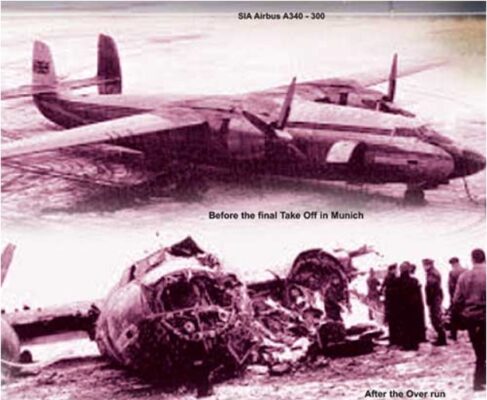 That morning the take-off at Kimpo went off like clockwork. As everything appeared to be normal there was no need to abandon the take-off and after getting airborne, we had to concentrate on other important things like a sharp turn left before reaching the DMZ (De Militarised Zone) and avoiding overflying the South Korean President’s Palace which was a known prohibited area. They would fire two tracer shells. If no action was taken to change course and avoid, they will attempt to shoot you out of the skies, passengers or no passengers!
That morning the take-off at Kimpo went off like clockwork. As everything appeared to be normal there was no need to abandon the take-off and after getting airborne, we had to concentrate on other important things like a sharp turn left before reaching the DMZ (De Militarised Zone) and avoiding overflying the South Korean President’s Palace which was a known prohibited area. They would fire two tracer shells. If no action was taken to change course and avoid, they will attempt to shoot you out of the skies, passengers or no passengers!
All in all, tackling a contaminated runway in modern times became a ‘piece of cake’ if one knew what to do. These procedures were not promulgated overnight. They were the result of ‘blood sweat and tears’ through the years. The story below is a good example.
In 1949 there was an accidental overrun of the runway of a Trans Canada Airlines (TCA) aircraft in Vancouver, Canada. The Investigators declared that the probable cause was the presence of slush (melting snow) on the runway preventing acceleration to the required speed for take-off. This observation was intimated to many airlines including British European Airlines (BEA) authorities who had not taken any cognizance and duly filed the letter without advising their operating crews of such possibilities.
Nine years later, on 6th Feb 1958, Capt James Thain and Capt Kenneth Rayment were operating a BEA charter flight from Belgrade Yugoslavia to London with the Manchester United Football Team and some well-known sports writers as their passengers. Both pilots were good friends and had served in the RAF together during WWII. Usually there would have been a regular First officer but since both captains had common interests like poultry farming, they had requested to operate together. The young Manchester United team known as ‘Busby Babes’ were well on their way to be European Cup Champions. Since the Airspeed Ambassador ‘Elizabethan’ aircraft did not have sufficient range to fly direct to London, they needed to do a Technical (refuelling) stop in Munich, Germany. The flight was uneventful till they reached Munich.
The Runway was contaminated with melting snow in Munich. Light snow was falling on the wings. Due to the fact that anti-ice heaters were used on the descent into Munich Airport, Capt. Thain decided not to get the wings cleaned. It was a judgment call.
After refuelling the crew attempted to take-off twice, but had to discontinue due to an engine malfunction. Then they taxied back to the ramp for a consultation with the Ground Engineer, after which the two captains decided to open power slowly to fix the engine problem which was known to occur in Munich which was over 1700 feet above mean sea level. On the third attempt the power was opened slowly and that involved a longer take off run which took the aircraft to a more contaminated unused part of the runway which actually made the aircraft lose speed from 117 knots to 105 knots and never accelerated to flying speed. Capt Thain was looking inside the cockpit and carefully ‘nursing’ the engines and monitoring the speed while Captain Rayment was handling the controls. When he looked outside the runway end was closing in quickly and it was too late. He opened throttles to the maximum. The wheels never left the ground because it didn’t have flying speed. The aircraft over ran and crashed through a fence, hit a tree and a house and burst into flames. The crash killed 23 out of the 44 passengers and crew on board, critically injuring Capt Kenneth Rayment, He passed away a few days later, leaving Capt Thain to carry the blame alone. With that, destroying the chances of Manchester United being European champions.
The German Accident investigator Capt. Hans J Reichel and his team arrived from Brunswick, West Germany, ill-equipped, about six hours later. By this time the weather had worsened and it was night time. He had to borrow lighting equipment from the BBC photo crew present at the site, He had been a pilot both in the Luftwaffe and Lufthansa the German Airline. The first thing he did was to check for wing ice and found a six-hour build-up of snow and declared that there was ice on the wings before take-off. No proper measurements of the depth of the slush were done on the runway at Munich. A parallel UK investigation was also launched. The formal accident inquiry commenced on 29th Apri’58 and was protracted and didn’t consider the effect of slush at all. The ‘Brits’ virtually fell in line with their German counterparts. The Final Accident Report came out on 9th March 1959, (More than a year after the crash), blaming the ice build-up on the wings and Capt Thain’s failure to de-ice.
It saidL:
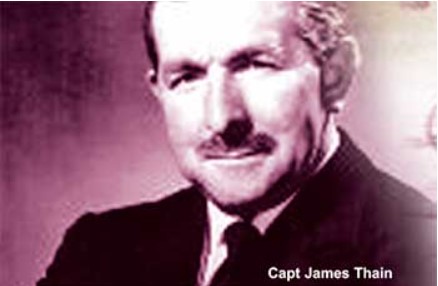 “Apart from the ice, we couldn’t find any other reason which could have contributed to the air crash “
“Apart from the ice, we couldn’t find any other reason which could have contributed to the air crash “
Capt Thain’s licence was suspended and he reverted to full time poultry farming while relentlessly working with the British Air Line Pilots Association (BALPA) to obtain more research data on the effects of slush on Take-off performance.
In 1961 Capt. Thain was fired from his job of BEA for allowing Capt Rayment to sit in the Left hand seat while he as designated Captain on the roster sat on the Right hand seat. The Captain on the roster should have sat on the Left hand seat and thus it was purported that he had violated the existing BEA Flight Crew Standing Orders which in itself a relatively minor matter. Looking back, it probably was just an excuse to shed him as this WWII veteran and BEA Captain ended up being an embarrassment to the Airline. There was no doubt about his ‘unquestionable ability’ up to that time of the accident. In the eyes of the general public and Football fans he was considered a villain.
If the German Accident Investigators blamed the Slush on the Runway for the overrun then the Munich Airport Authorities would have to take the rap for not cleaning the runway surface. It was rather obvious that like in most accidents it is convenient and emotionally satisfying to blame an individual and not the system that gave rise to the unsafe situation. Capt. Thain did not give up trying to clear his name. He was determined to find out the real cause of the accident. He appealed.
Seven months after the crash in September 1958 the FAA started conducting practical tests on the impact of slush on aircraft acceleration for take-off. Although there was new scientific evidence available, the Germans were not keen on reopening the case and Capt. Thain was languishing in guilt. Capt. Thain kept the pressure on. Eventually in 1967 Prime Minister Harold Wilson mentioned publicly, that Capt. Thain was a “victim of injustices.” Soon after (1968) the British were also conducting experiments with slush on the runway at Royal Aircraft Establishment (RAE) in Bedford in shallow ponds of standing water, using Canberra, Viscount and Ambassador Aircraft. The significant adverse effects of slush on the Runway were confirmed.
Finally, Capt. Thain’s persistence paid off and his plight was mentioned in Parliament and the British Authorities agreed to review the investigation and found that the German investigation was incomplete. The Investigators had not interviewed many witnesses including the Air Traffic Controllers and those who reached the wreck first and could have given evidence to say that there was no ice on the wings immediately before the crash. It seemed that witnesses had been selectively interviewed to fit the ‘probable cause’.
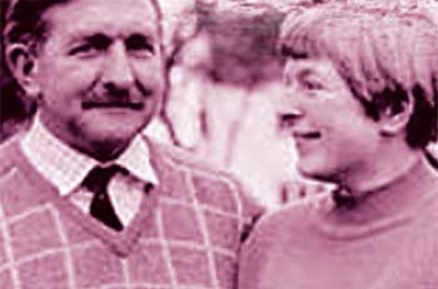 Eleven long years after the crash in March 1969 Capt. James Thain was finally exonerated, but died soon afterwards of a heart attack at a relatively young age of 54, due to trauma and stress. This prompted one of the ‘wags’ in the BALPA to declare that “If the crash doesn’t kill you, the inquiry will”
Eleven long years after the crash in March 1969 Capt. James Thain was finally exonerated, but died soon afterwards of a heart attack at a relatively young age of 54, due to trauma and stress. This prompted one of the ‘wags’ in the BALPA to declare that “If the crash doesn’t kill you, the inquiry will”
Capt. James Thain with his determination to find the real culprit of the Munich accident made taking off in slush safer for airline pilots, by triggering off research on both sides of the Atlantic that evolved into SOP’s which allowed us to take off safely from Kimpo that wintry morning.
In his own words, to his daughter, “The difference between the possible and impossible is merely a measure of man’s determination”
To me, Capt. James Thain was an unsung hero whose great determination to prove his innocence made flying safer for the future air travellers.







